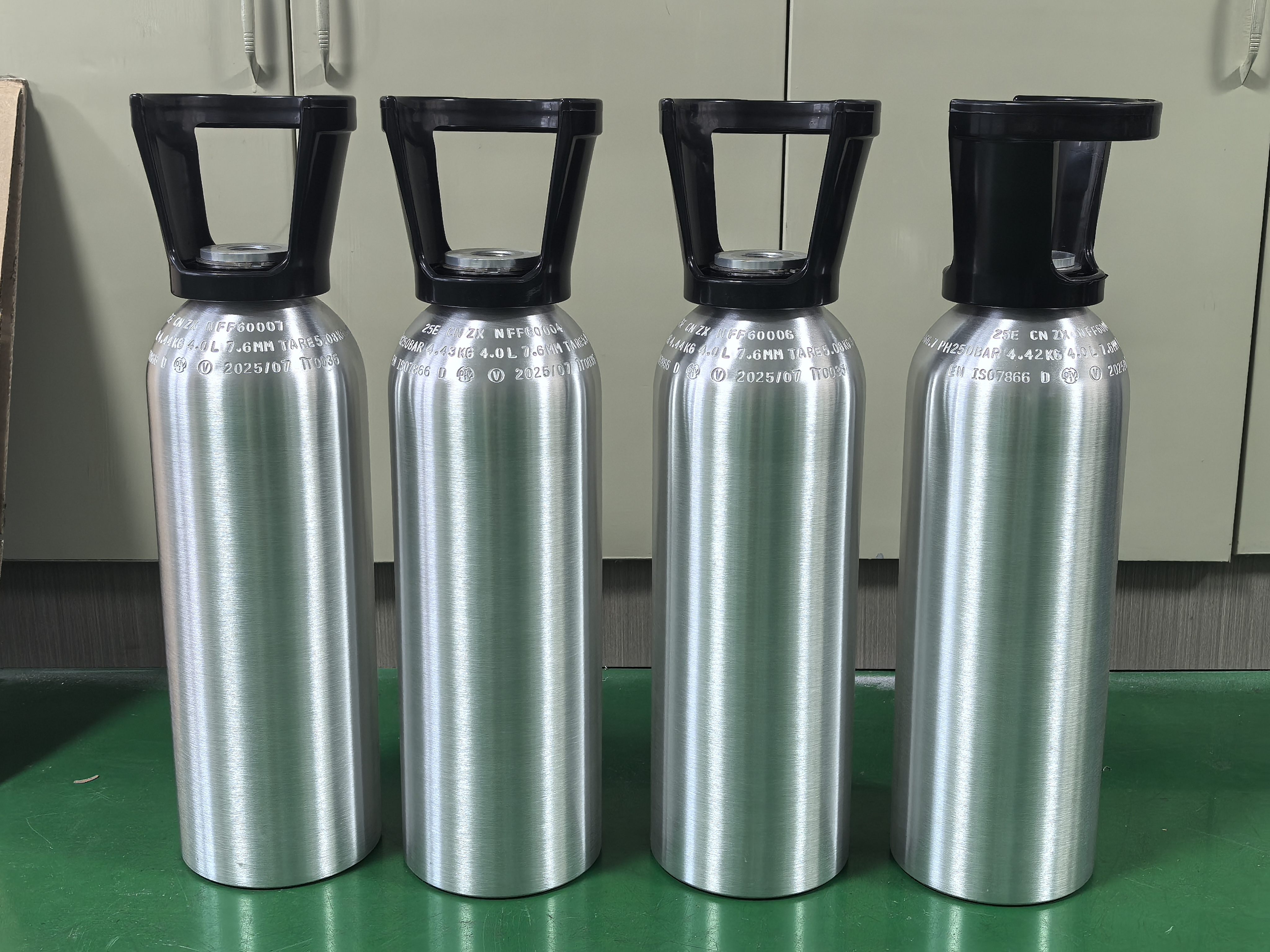Across Europe’s beverage, medical and industrial gas industries, the choice between aluminum and steel cylinders is shaped by handling needs, corrosion resistance, cleanliness, and lifecycle impact. While both materials have proven track records, recent market trends show increasing interest in aluminum for certain applications.
Aluminum alloy cylinders, commonly made from AA6061, offer clear weight advantages over steel. This lighter mass improves manual handling, reduces operator fatigue, and speeds up cylinder changeovers — especially valuable in beverage dispense operations, portable medical oxygen delivery, and mobile industrial gas supply. The naturally forming oxide layer gives aluminum excellent corrosion resistance, protecting gas purity in humid or CO₂-richenvironments and extending downstream equipment life. Inside, the smooth, rust-free surface helps maintain beverage flavour, oxygen cleanliness, and industrial gas integrity over extended service periods. Over the cylinder’s lifespan, these benefits can reduce maintenance costs, minimise downtime and extend service intervals – often delivering a lower total cost of ownership compared to alternatives.
Steel cylinders remain a proven option, particularly where higher working pressures or very large capacities are required. Their established supply chains ensure broad availability and in fixed industrial settings they can deliver long service lives with the right care. However, the heavier weight makes manual handling more demanding, and internal corrosion in moisture-prone service often requires more frequent inspections and maintanance.
From a sustainability perspective, aluminum is fully recyclable and, thanks to its lower weight, reduces transport-related emissions. Natural or brushed finishes can also cut repainting cycles and chemical use. Steel is likewise recyclable and, in long-life fixed installations can be a durable choice — though these benefits are more pronounced in stationary rather than mobile operations.
For many European operators, the choice is increasingly about matching aluminum’s handling, corrosion resistance, and cleanliness advantages to high-mobility, high-hygiene applications, while relying on steel for specific high-pressure or stationary storage uses — all within compliance frameworks such as TPED, DOT-3AL, ISO 9001, ISO 14001, and ISO 13485 for medical.
Post time: Aug-15-2025





